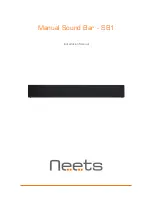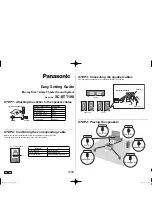
5
2.1 Introduction
The Tungsten Inert Gas, or TIG process, uses
the heat generated by an electric arc struck
between a non-consumable tungsten electrode
and the workpiece to fuse metal in the joint
area and produce a molten weld pool.The arc
area is shrouded in an inert or reducing gas
shield to protect the weld pool and the non-
consumable electrode.The process may be
operated autogenously, that is, without filler, or
filler may be added by feeding a consumable
wire or rod into the established weld pool.
2.2 Process
Direct or alternating current power sources
with constant current output characteristics
are normally employed to supply the welding
current. For DC operation the tungsten may
be connected to either output terminal, but
is most often connected to the negative pole.
The output characteristics of the power source
can have an effect on the quality of the welds
produced.
Shielding gas is directed into the arc area by the
welding torch and a gas lens within the torch
distributes the shielding gas evenly over the
weld area. In the torch the welding current is
transferred to the tungsten electrode from the
copper conductor.The arc is then initiated by
one of several methods between the tungsten
and the workpiece.
2.3 Process Variables
DCEN
When direct-current electrode-negative
(straight polarity) is used:
Electrons strike the part being welded at a
high speed.
Intense heat on the base metal is produced.
The base metal melts very quickly.
Ions from the inert gas are directed towards
the negative electrode at a relatively slow rate.
Direct current with straight polarity does not
require post-weld cleaning to remove metal
oxides.
2.0 Gas Tungsten Arc Welding
(GTAW/TIG)
Summary of Contents for Tig200
Page 9: ...7 2 4 Shielding Gas Selection...
Page 12: ...10...
Page 13: ...11...
Page 14: ...12...
Page 15: ...13 2 9 Joint Preparation...
Page 16: ...14...
Page 17: ...15...
Page 18: ...16...
Page 19: ...17 3 0 TIG Welding of Materials 3 1 Application Summary...
Page 26: ...24 TIG ARC 200MP TIG ARC 200MP 1 2 3 4 5 6 7 8 10 11 12 16 38 37 29 24 22 23 34 32 27 9 25 26...
Page 27: ......
Page 33: ...31 Notes...
Page 34: ...33 Notes...








































